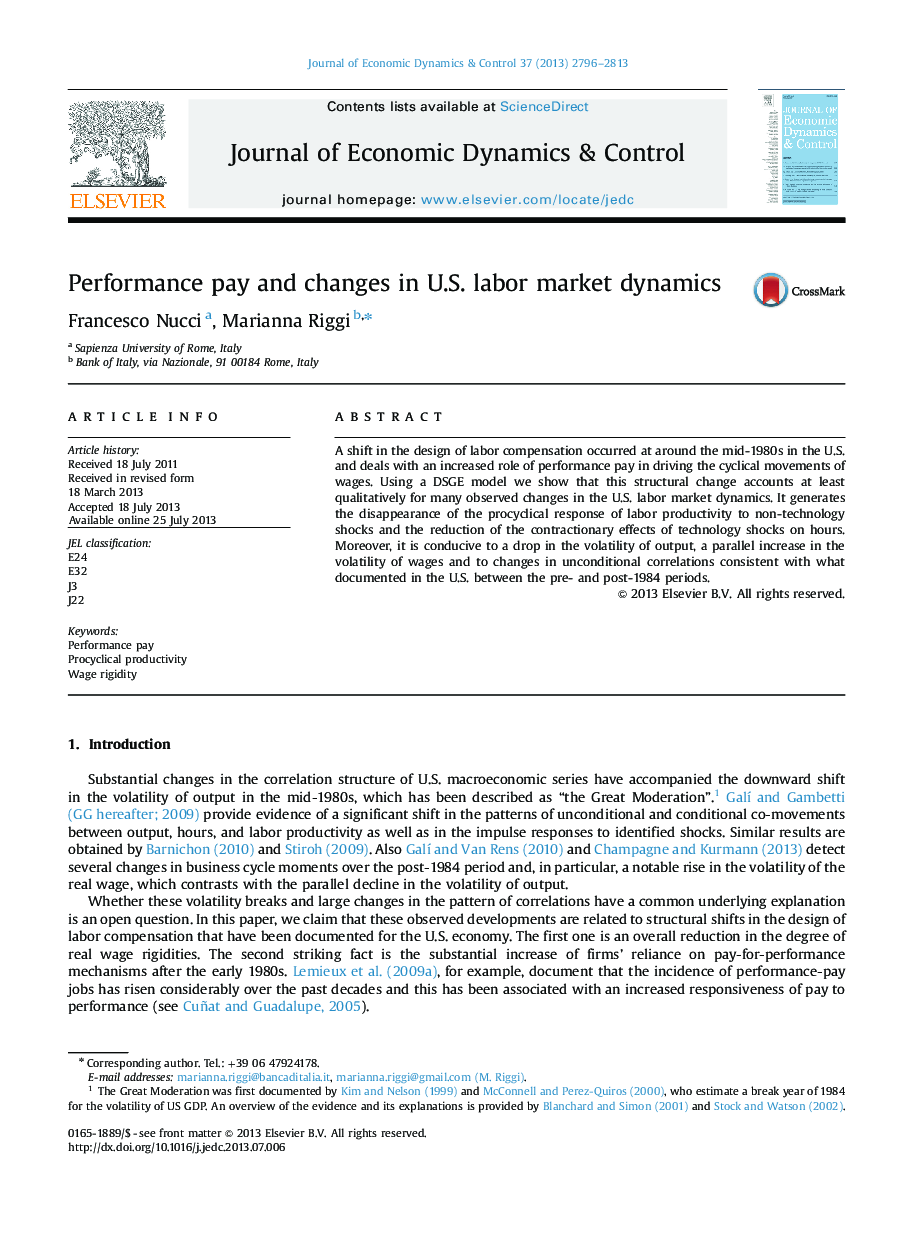| Article ID | Journal | Published Year | Pages | File Type |
|---|---|---|---|---|
| 5098674 | Journal of Economic Dynamics and Control | 2013 | 18 Pages |
Abstract
A shift in the design of labor compensation occurred at around the mid-1980s in the U.S. and deals with an increased role of performance pay in driving the cyclical movements of wages. Using a DSGE model we show that this structural change accounts at least qualitatively for many observed changes in the U.S. labor market dynamics. It generates the disappearance of the procyclical response of labor productivity to non-technology shocks and the reduction of the contractionary effects of technology shocks on hours. Moreover, it is conducive to a drop in the volatility of output, a parallel increase in the volatility of wages and to changes in unconditional correlations consistent with what documented in the U.S. between the pre- and post-1984 periods.
Related Topics
Physical Sciences and Engineering
Mathematics
Control and Optimization
Authors
Francesco Nucci, Marianna Riggi,
